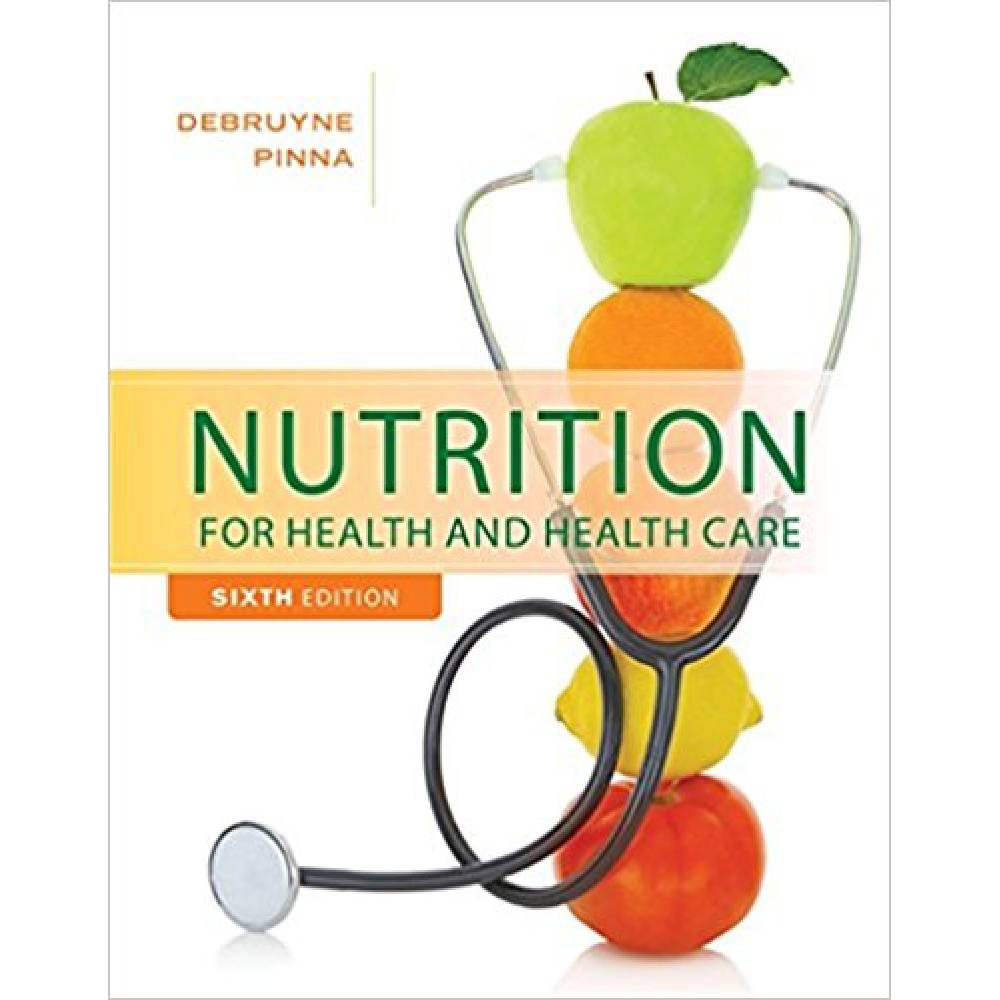Nutrition For Health And Healthcare 6th Edition By DeBruyne Pinna – Test Bank
True / False
1. At the age of two, healthy children have attained approximately half of their adult height.
a. True
b. False
ANSWER: True
REFERENCES: 11.1 Nutrition of the Infant
LEARNING OBJECTIVES: NHHE.DEBR.17.11.1 – Describe the nutritional needs of infants, the beneficial components of breast milk, and the appropriate foods and feeding practices for infants.
KEYWORDS: Bloom’s: Understand
2. Infant formulas typically contain protective antibodies for infants.
a. True
b. False
ANSWER: False
REFERENCES: 11.1 Nutrition of the Infant
LEARNING OBJECTIVES: NHHE.DEBR.17.11.1 – Describe the nutritional needs of infants, the beneficial components of breast milk, and the appropriate foods and feeding practices for infants.
KEYWORDS: Bloom’s: Understand
3. The AAP supports exclusive breastfeeding for approximately six months but recognizes that infants are often developmentally ready to accept complementary foods between four and six months of age.
a. True
b. False
ANSWER: True
REFERENCES: 11.1 Nutrition of the Infant
LEARNING OBJECTIVES: NHHE.DEBR.17.11.1 – Describe the nutritional needs of infants, the beneficial components of breast milk, and the appropriate foods and feeding practices for infants.
KEYWORDS: Bloom’s: Apply
4. The way children eat influences their nutritional health during childhood, during their teen years, and for the rest of their lives.
a. True
b. False
ANSWER: True
REFERENCES: 11.2 Nutrition during Childhood
LEARNING OBJECTIVES: NHHE.DEBR.17.11.2 – Explain how children’s appetites and nutrient needs reflect their stage of growth; why hunger, iron deficiency, lead poisoning, food allergies, hyperactivity, and obesity are often concerns during childhood; and how parents and other caregivers can foster healthful eating habits and food choices in children.
KEYWORDS: Bloom’s: Understand
5. No RDA for total fat has been established, but the DRI committee recommends a fat intake of 10 to 15 percent of energy for children 1 to 3 years of age.
a. True
b. False
ANSWER: False
REFERENCES: 11.2 Nutrition during Childhood
LEARNING OBJECTIVES: NHHE.DEBR.17.11.2 – Explain how children’s appetites and nutrient needs reflect their stage of growth; why hunger, iron deficiency, lead poisoning, food allergies, hyperactivity, and obesity are often concerns during childhood; and how parents and other caregivers can foster healthful eating habits and food choices in children.
KEYWORDS: Bloom’s: Remember
6. The initial goal for overweight children is to reduce weight gain through diet restriction.
a. True
b. False
ANSWER: False
REFERENCES: 11.2 Nutrition during Childhood
LEARNING OBJECTIVES: NHHE.DEBR.17.11.2 – Explain how children’s appetites and nutrient needs reflect their stage of growth; why hunger, iron deficiency, lead poisoning, food allergies, hyperactivity, and obesity are often concerns during childhood; and how parents and other caregivers can foster healthful eating habits and food choices in children.
KEYWORDS: Bloom’s: Understand
7. Teenage boys experience a more intense growth spurt and develop more lean body mass than girls do.
a. True
b. False
ANSWER: True
REFERENCES: 11.3 Nutrition during Adolescence
LEARNING OBJECTIVES: NHHE.DEBR.17.11.3 – Describe the nutrient needs of adolescents and some of the challenges in meeting these needs.
KEYWORDS: Bloom’s: Understand
8. The RDA increases at age 12 for both males and females and then returns to preadolescent values in early adulthood.
a. True
b. False
ANSWER: False
REFERENCES: 11.3 Nutrition during Adolescence
LEARNING OBJECTIVES: NHHE.DEBR.17.11.3 – Describe the nutrient needs of adolescents and some of the challenges in meeting these needs.
KEYWORDS: Bloom’s: Understand
9. Adult heart disease is a major pediatric problem.
a. True
b. False
ANSWER: True
REFERENCES: 11.4 Nutrition in Practice: Childhood Obesity and the Early Development of Chronic Diseases
LEARNING OBJECTIVES: NHHE.DEBR.17.11.4 – Describe the lifestyle factors that can help prevent childhood obesity and the development of type 2 diabetes and heart disease.
KEYWORDS: Bloom’s: Remember
10. Cholesterol values at birth are similar in all populations and differences do not emerge until late adolescence.
a. True
b. False
ANSWER: False
REFERENCES: 11.4 Nutrition in Practice: Childhood Obesity and the Early Development of Chronic Diseases
LEARNING OBJECTIVES: NHHE.DEBR.17.11.4 – Describe the lifestyle factors that can help prevent childhood obesity and the development of type 2 diabetes and heart disease.
KEYWORDS: Bloom’s: Understand













Reviews
There are no reviews yet.